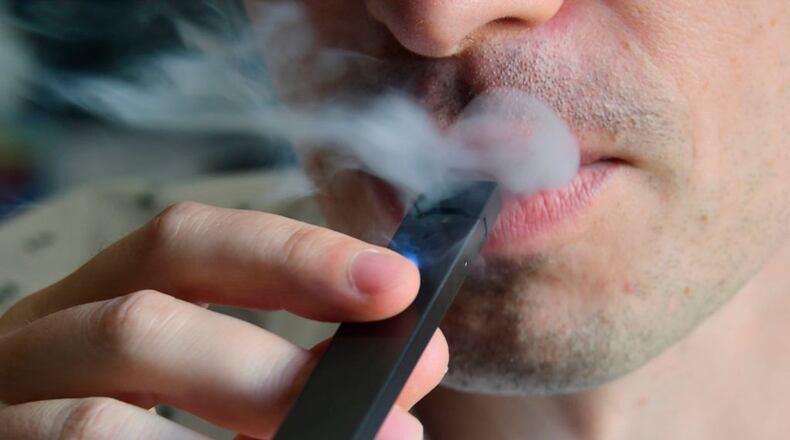RELATED: FDA, local schools take steps as teen e-cigarette use surges
“The explosive increase in vaping among our youth is a public health crisis, and we must educate them and their parents about the dangers of vaping,” Acton said. “Youth have shown an increased vulnerability to nicotine addiction, and evidence suggests that nicotine use during adolescence and young adulthood has long-term impacts on brain development.”
President Trump said Wednesday that his administration is working on a plan to ban all non-tobacco-flavors from vaping products.
State and local public health officials in Ohio have confirmed that 10 reports of severe pulmonary illness are likely due to vaping and are investigating an additional 14 reports of illness. In 33 states, the CDC says that it’s aware of more than 450 possible cases of severe pulmonary illness after vaping and six deaths.
There’s no single product or device linked to all the cases of lung disease. Some, but not all, reported recent use of products containing THC, a chemical in marijuana.
Both vaping industry officials and the CDC warned against using modified products or e-cigarette products bought off the street.
While recent illness reports fueled the conversation, public health officials have been emphasizing concerns that predate the mystery lung disease: that teens are getting hooked on vaping.
Juul Labs, one of the makers of e-cigarettes, grew its product with the help of marketing campaigns where young adults with large numbers of followers promoted their product. Critics and public health officials have said this strategy of making their product look cool and youthful fueled an alarming rise in teen vaping.
MORE: JUUL to stop selling most e-cigarette flavors in stores and add age verification
Juul has maintained that its products were never marketed toward children and has raised the purchase age for its online store to 21, shut down its Instagram and Facebook account, and stopped selling certain flavors in stores.
“Our intent was never to have youth use Juul products. But intent is not enough, the numbers are what matter, and the numbers tell us underage use of e-cigarette products is a problem. We must solve it,” Juul CEO Kevin Burns said at the time.
The number of Ohio teens who smoke cigarettes has declined dramatically over the last 20 years, and public health officials are worried that the rise in vaping is undoing their hard work. Nationally, last year there was a 48 percent rise in vaping among middle schoolers and a 78 percent increase in vaping among high schoolers, though those numbers aren’t available yet at the state level.
Ohio Tobacco Quit Line
Call Ohio Tobacco Quit Line at 1-800-QUIT-NOW anytime for help quitting smoking or the use of other tobacco products, including e-cigarettes.
A quit coach leads a counseling session during your first call. There are a total of five scheduled sessions.
You can chose to have nicotine patches, gum or lozenges sent directly to your home, free of charge for everyone in the state. Someone will also call in about seven months to check in and you can call anytime for extra help.
The DeWine administration has already worked on several initiatives to curb teen vaping. This includes raising the purchase age to 21 starting Oct. 17 and placing an excise tax on e-cigarettes, which in the past were not subject to an excise tax. Raising the price of tobacco through an excise tax is an evidence-based way to reduce consumption.
MORE: As teen drinking declines, another health concern emerges: vaping
Acton said that besides these efforts, these recently announced funds will be used for social media outreach to combat the social media messages that promoted vaping.
The newly announced efforts from the administration include a letters to schools encouraging them to prohibit the use of vaping products and to warn about the dangers of vaping and where to get free help to quit; about $3.3 million to develop and promote community education resources so groups and parents can take action; and about $800,000 in public education campaigns targeting youth and their parents about vaping.
While there’s decades of research on what works to reduce smoking, widespread teen vaping is a relatively new phenomenon and there are still some new questions on what works best to help kids quit.
“The science is trying to keep up with this big experiment that’s been done on our kids,” Acton said.
Acton said one thing that is concerning about vaping is that when people vape by heating oils to a high temperature, those oils cool and can coat the lungs and prevent the flow of oxygen.
“That’s why we are saying ‘avoid it,’ and you can’t say ‘avoid it’ if you don’t have a way for people addicted to stop” she said.
About the Author
